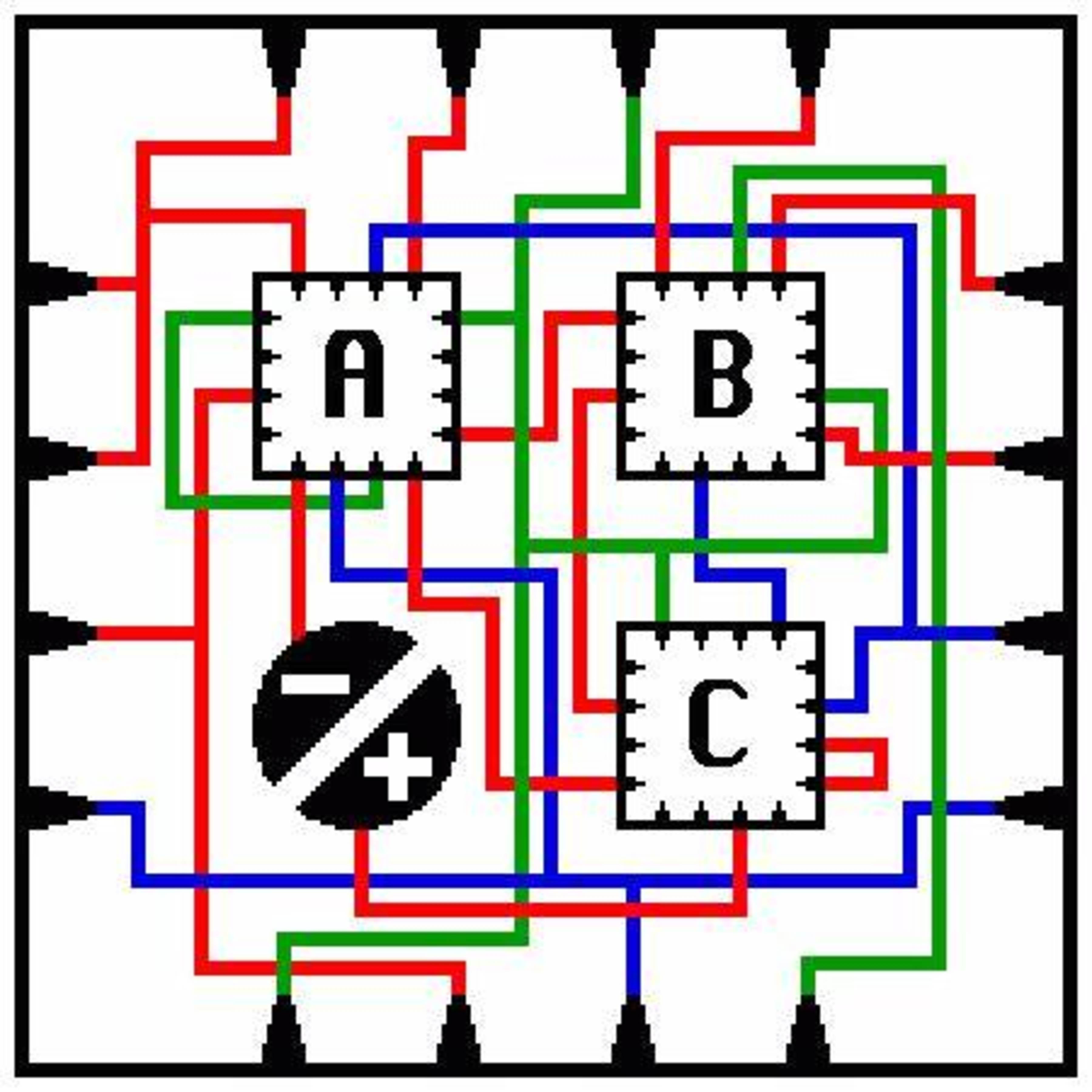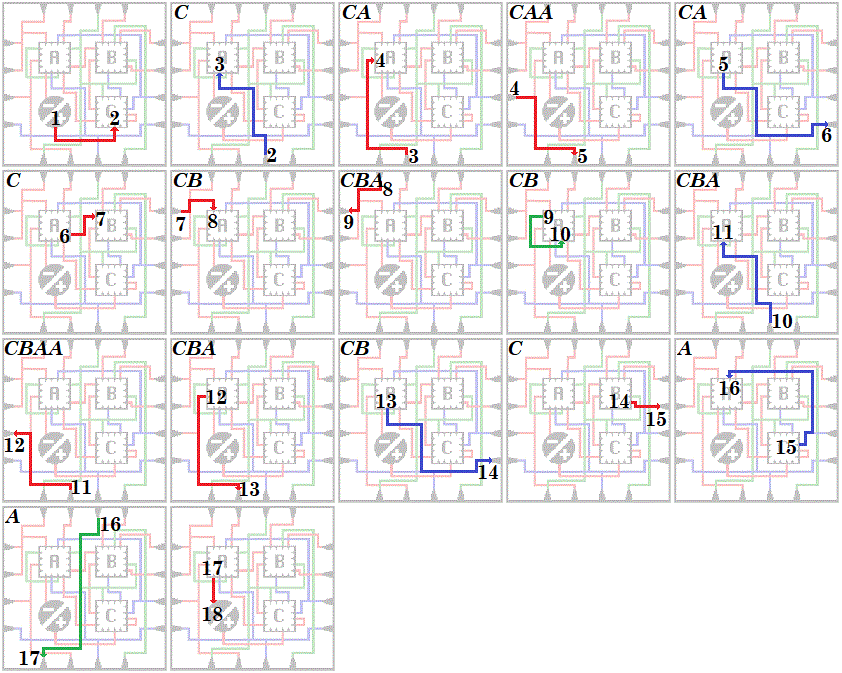Fractal Maze

Above is the fractal maze , where region A , B , C are exact copies of the maze itself. Is it possible to go from + sign to − sign (of the same depth as the starting point)?
Note: You can't go from one path to another by the intersections. These are actually high-way overpasses.
This section requires Javascript.
You are seeing this because something didn't load right. We suggest you, (a) try
refreshing the page, (b) enabling javascript if it is disabled on your browser and,
finally, (c)
loading the
non-javascript version of this page
. We're sorry about the hassle.
2 solutions

Wow, easy approach! But I think there is something wrong here. I meant the negative sign of the same depth as the positive sign.
The - sign that you enter is not at the same depth as the + sign you leave. You are still in the C square when you enter the -sign.
Log in to reply
Hmmm ... that stipulation was not in the original problem. I'll have to look at this again.
@David Vreken , Similar reasoning. By the way, @Alice Smith Fantastic problem. The most unique one I've seen in a while. A whole new concept like a fractal in a maze is just awesome!!
Log in to reply
Yeah, I just found it on the Internet and decided to post it here. Actually, it's a very good problem!
Ohh, can you please share the original link. Thanks!
Log in to reply
http://www.mathpuzzle.com/18Nov2003.html
Nice thank you for sharing another resource! The article itself has another hard fractal puzzle. I'll try to solve it!
I wrote this Python computer program to help me find the solution:
1 2 3 4 5 6 7 8 9 10 11 12 13 14 15 16 17 18 19 20 21 22 23 24 25 26 27 28 29 30 31 32 33 34 35 36 37 38 39 40 41 42 43 44 45 46 47 48 49 50 51 52 53 54 55 56 57 58 59 60 61 62 63 64 65 66 67 68 69 70 71 72 73 74 75 76 77 78 79 80 81 82 83 84 85 86 87 88 89 90 91 92 93 94 95 96 97 98 99 100 101 102 103 104 105 106 107 108 109 110 111 112 113 114 115 116 117 118 119 120 121 122 123 124 125 126 127 128 129 130 131 132 133 134 135 136 137 138 139 140 141 142 143 144 145 146 147 148 149 150 151 152 153 154 155 156 157 158 159 160 161 162 163 164 165 166 167 168 169 170 171 |
|
I just found the shortest path: + to A then go to the first one on the bottom and that goes to the - sign - that gave me the answer Yes.
Oh, I forget to say that you can't go from one path to another by the intersections. These are actually high-way streets:)
Log in to reply
Well, I didn't know at the time...